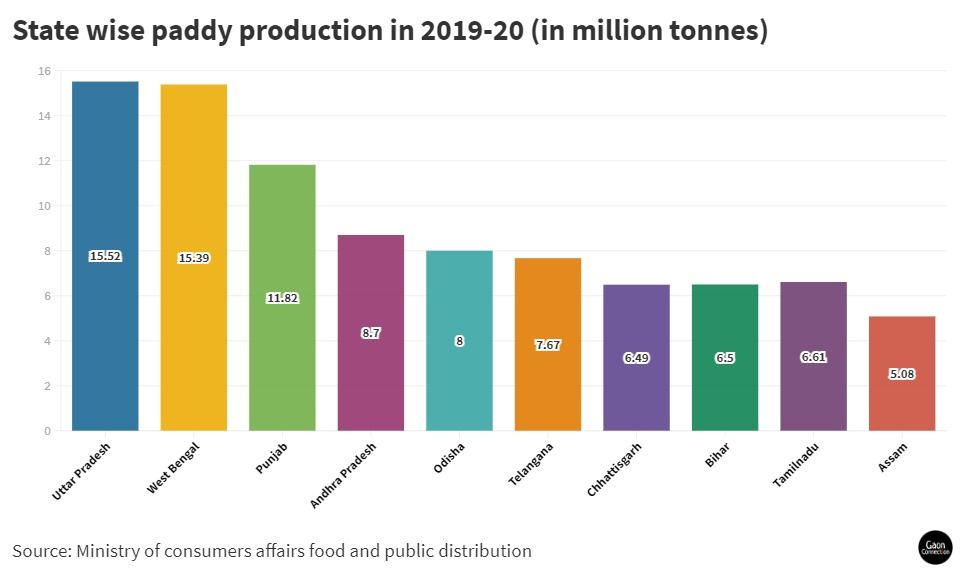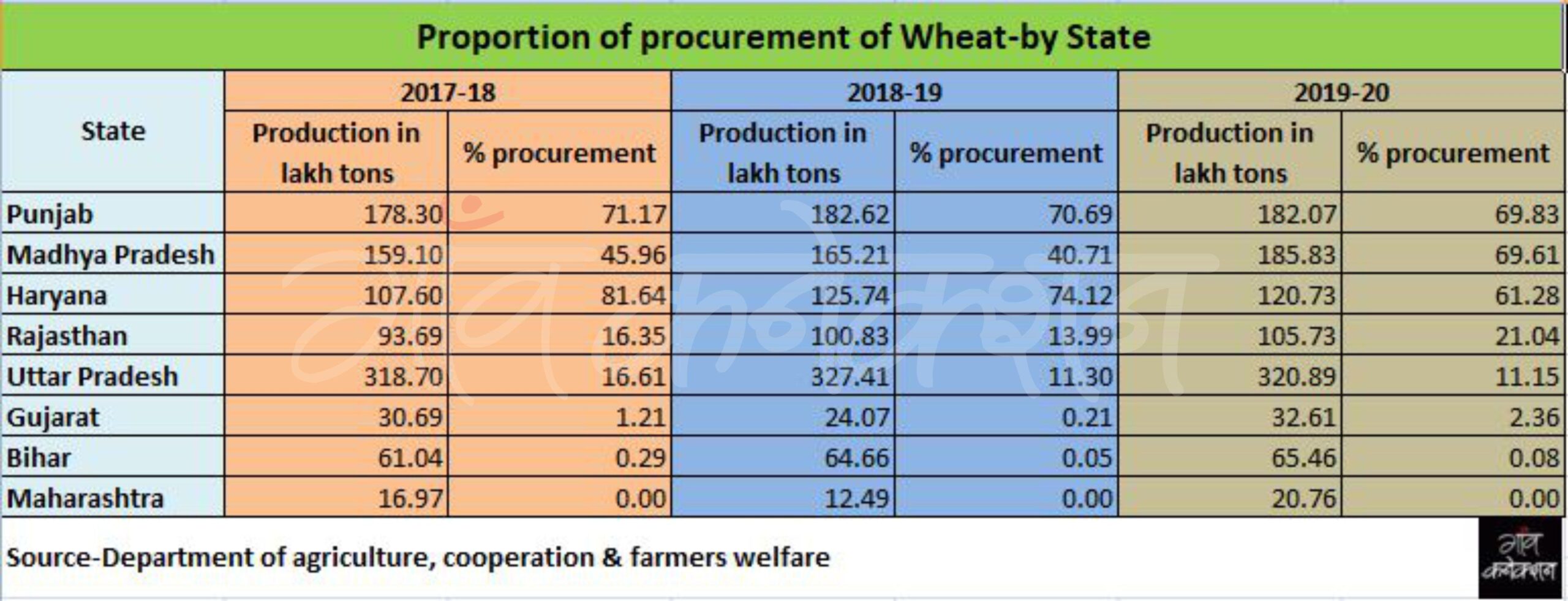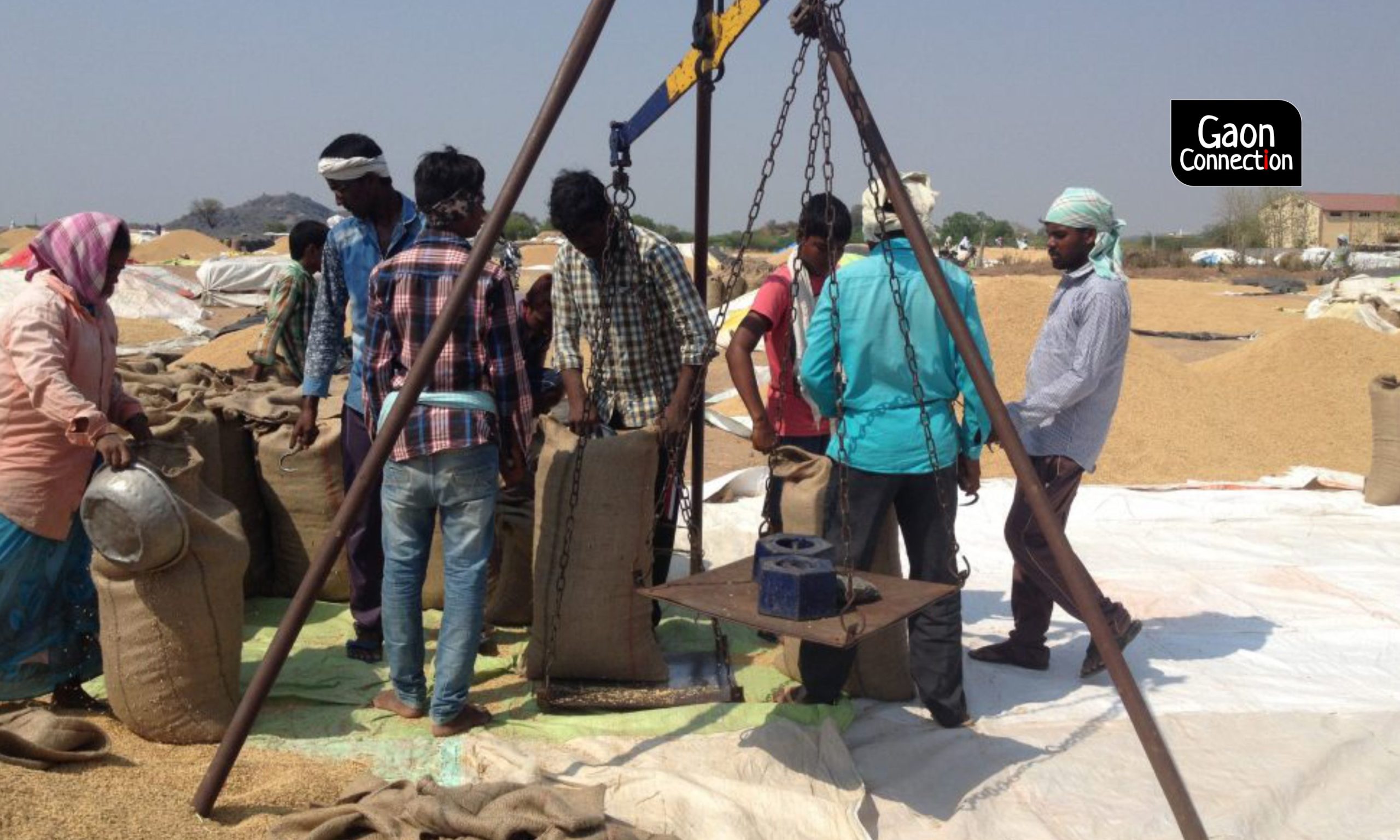Telangana led the nation in paddy procurement at minimum support price (MSP) for 2019-20. A whopping 97 per cent of the paddy produced was procured at MSP. In 2017-2018, this was just 57.78 per cent. Similarly, in Maharashtra, procurement of paddy at MSP has increased by nearly five times, from 6.55 per cent in 2017-2018 to 37.20 per cent in 2019-2020. Likewise, procurement of wheat in Madhya Pradesh went up to 69.61 per cent of production in 2019-2020 from 45.46 per cent in 2017-2018.
What brought about this substantial increase in procurement of paddy and wheat at government rates in these states?
In Telangana, out of 7.67 million tonnes, which is the total production of paddy in the Kharif season of 2019-20, 7.45 million tonnes (97.08 per cent) was procured at MSP, the highest among states. In 2017-2018, this was 3.61 million tonnes procurement from a production of 6.26 million tonnes (57.78 per cent).

The Department of Food Civil Supplies and Consumer Protection procures paddy through Online Procurement Management System (OPMS) in Telangana. Regarding the increase in procurement, T Santosh Kumar, divisional officer, OPMS, Karimpur district, Telangana, told Gaon Connection: “We have orders to buy every grain produced by farmers. We have set up procurement centres in almost every village in our 30 districts.”
Telangana has between 7,000 and 8,000 procurement centres, and this has seen an increase post-COVID-19, the official said. “The money is credited to farmers’ accounts within three or four days. This is why they don’t sell to middlemen. We pay them better money and on time,” Kumar added.
Another reason for increased production is that the Kaleshwaram Lift Irrigation Project on the Godavari River supports Mission Kakatiya (active since June 2014), which restores minor irrigation tanks and lakes in Telangana. This has, in turn, increased water supply for irrigation. “This has also resulted in more acreage under paddy,” Kumar pointed out.
In Telangana, the Kharif season is called Vanakalam (monsoon) and Rabi season as Yassangi (summer). According to the annual report of the Reserve Bank of India, paddy was sown in 1.96 million hectares in Telangana in 2017-18 while acreage shrunk mildly in 2018-19 (1.93 million hectares) but the government procurement had, nonetheless, increased.
According to the government of India’s department of agricultural cooperation and farmers welfare, paddy output in Telangana also increased considerably between 2017-2018 and 2019-2020. Production of paddy in 2017-2018 was 6.26 million tonnes, and it rose to 7.67 million tonnes in 2019-2020.

Farmers say the turnaround is due to more availability of water. Varun Jakkinapalli, 32, a young farmer from Rangareddy district, about 80 kilometres from state capital Hyderabad, does dairy farming besides paddy cultivation. Reiterating what Kumar said, he told Gaon Connection: “Previously, there was water shortage in many areas of our district, but the situation has improved considerably since the Kaleshwaram scheme. With improved water supply, farmers are sowing more paddy, and the government is also procuring it.”
Maharashtra also has increased its paddy procurement manifold. In the Kharif season 2017-2018, a mere 6.55 per cent of paddy produced was procured at MSP. In 2019-2020, this rose to a whopping 37.20 per cent. Production has increased from 2.73 million tonnes to 3.72 million tonnes.
In Maharashtra, paddy cultivation is good in some districts of Vidarbha as well as Raigad and Ratnagiri in the Konkan belt. However, parts of Maharashtra constantly reel under drought and water scarcity, so the increase in paddy acreage is surprising. Acreage under paddy in Maharashtra was 1.45 million hectares in 2017-2018 and this increased to 1.46 million hectares in 2018-2019. In terms of production, it went up from 2.73 million tonnes in 2017-2018 to 3.11 million tonnes in 2019-2020.
Vijay Javadekar, an economist from Nagpur, Maharashtra, attributes the increase in procurement of paddy at MSP in the state to the bonus provided by the government to paddy. “The state government has been giving a bonus of seven hundred rupees per quintal on paddy. That is why, despite lagging behind other states in production, government procurement of paddy is increasing in Maharashtra,” he told Gaon Connection over phone.

Like Telangana, which leads in procuring paddy at MSP, Madhya Pradesh leads in wheat procurement at MSP. It also led in wheat production during the Rabi season of 2019-2020, with Punjab posing a stiff challenge. Madhya Pradesh led in 2015-2016, 2016-2017 and 2019-2020, with Punjab taking the top spot in the intervening years.
However, in procurement percentage, Punjab led in 2019-2020. Out of the 18.2 million tonnes of wheat produced in Punjab, 12.7 million tonnes (69.83 per cent) was procured at MSP. Madhya Pradesh was a close second — procurement under MSP was 69.61 per cent: 12.93 million tonnes of 18.58 million tonnes production.
Chandrabhan Rana, 60, a resident of Karhal in Sheopur district of Madhya Pradesh, about 420 kilometres from state capital Bhopal, has been cultivating wheat for a long time. “In the last few years, production of wheat has increased considerably in our region and the government is also serious about procurement. The process has been made easier, and the quantity of procurement at MSP is increasing every year,” he told Gaon Connection.


















